Explain the difference in the following reactions.
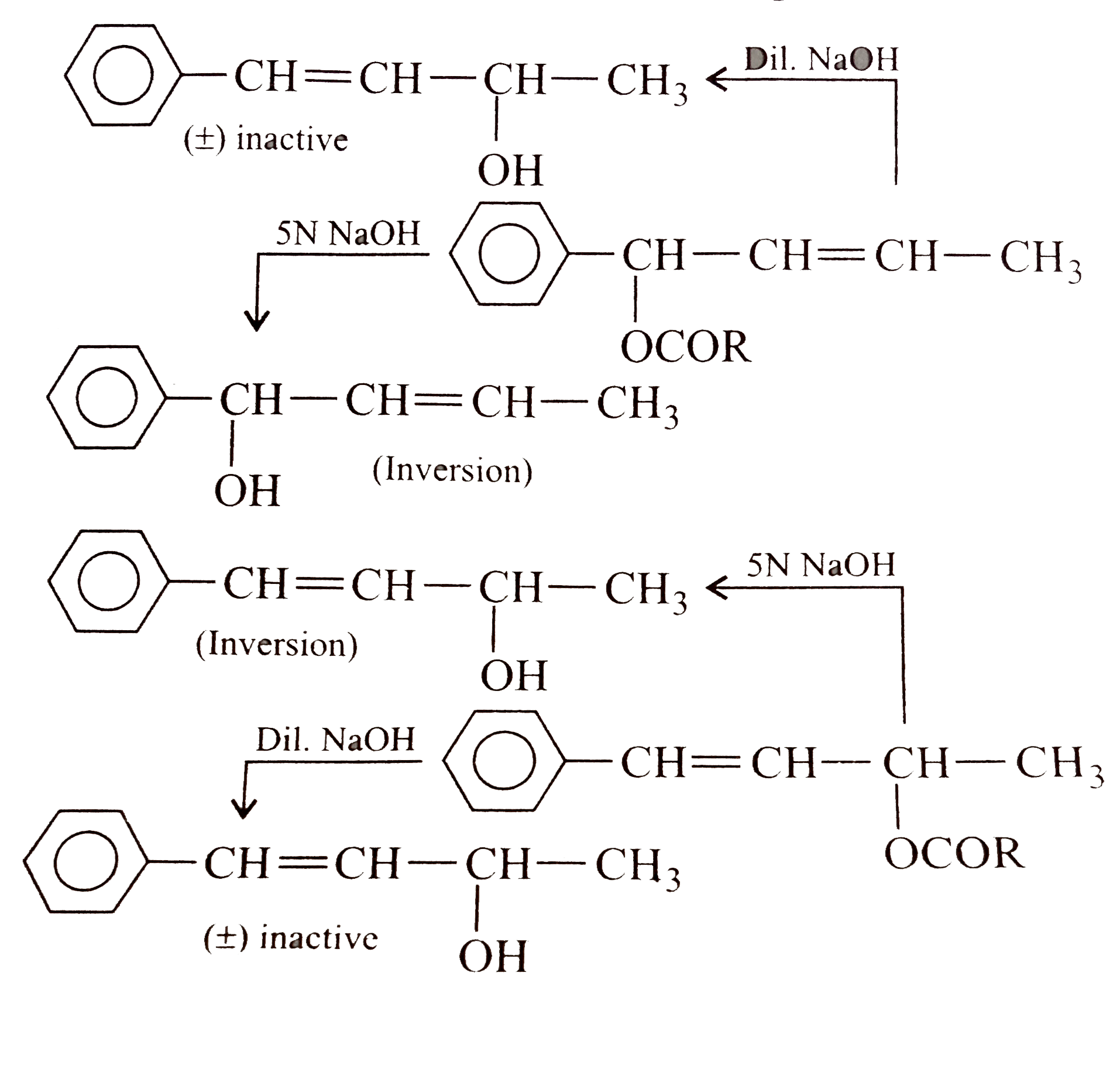 .
.
Video Solution
Text Solution
When the concentration of the nucleophile (ӨOH) is high (5NNaOH), it follows SN2 reaction and inversion takes place.
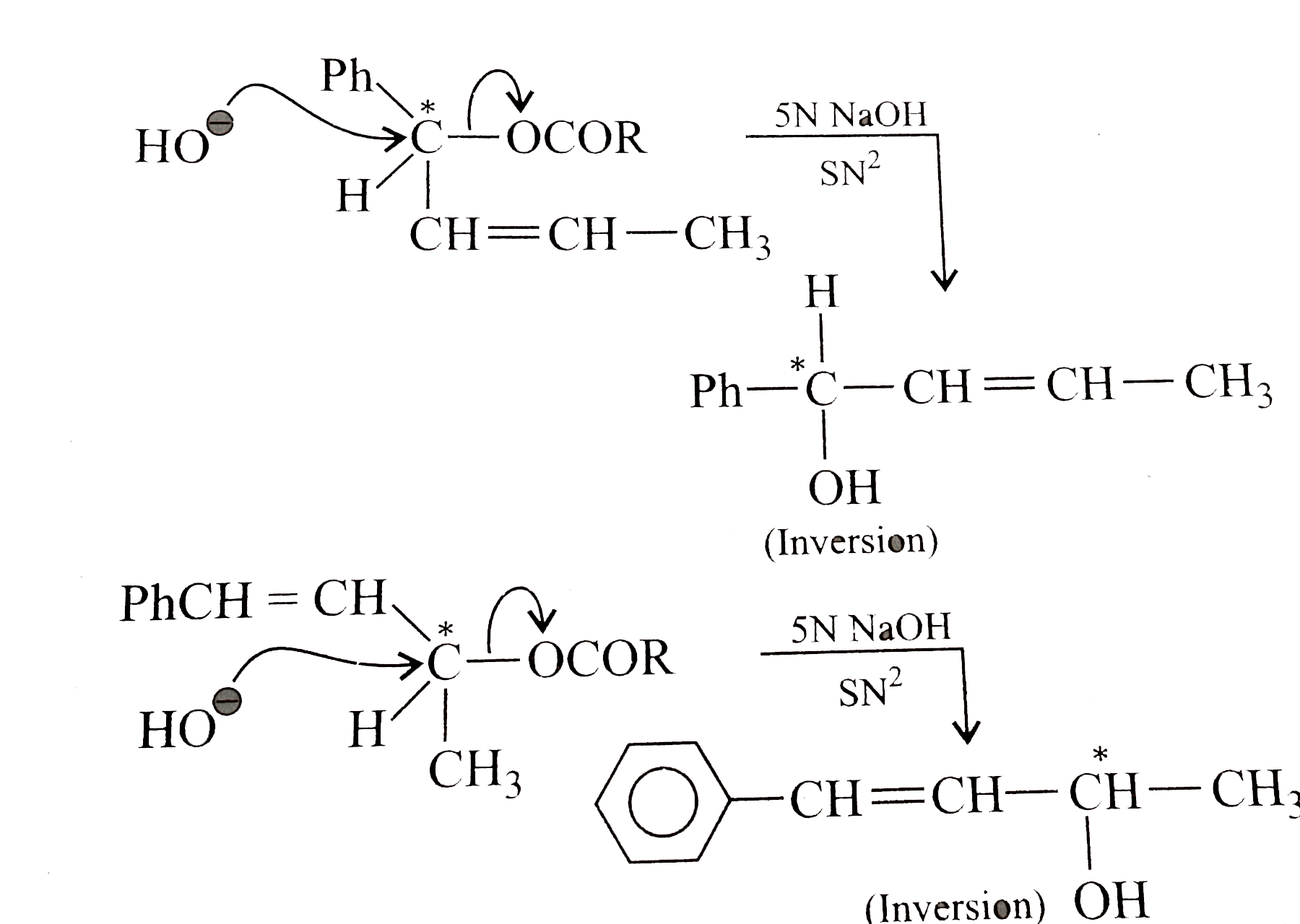
With dil. NaOH,SN1 mechanism is followed when (C=O) bond at chircal carbon is cleaved forming a carbonium. Hence, attack by nucleophile (ӨOH) takes place from both directions forming inversion and retention products resulting in (±) forms, i.e., inactive forms.
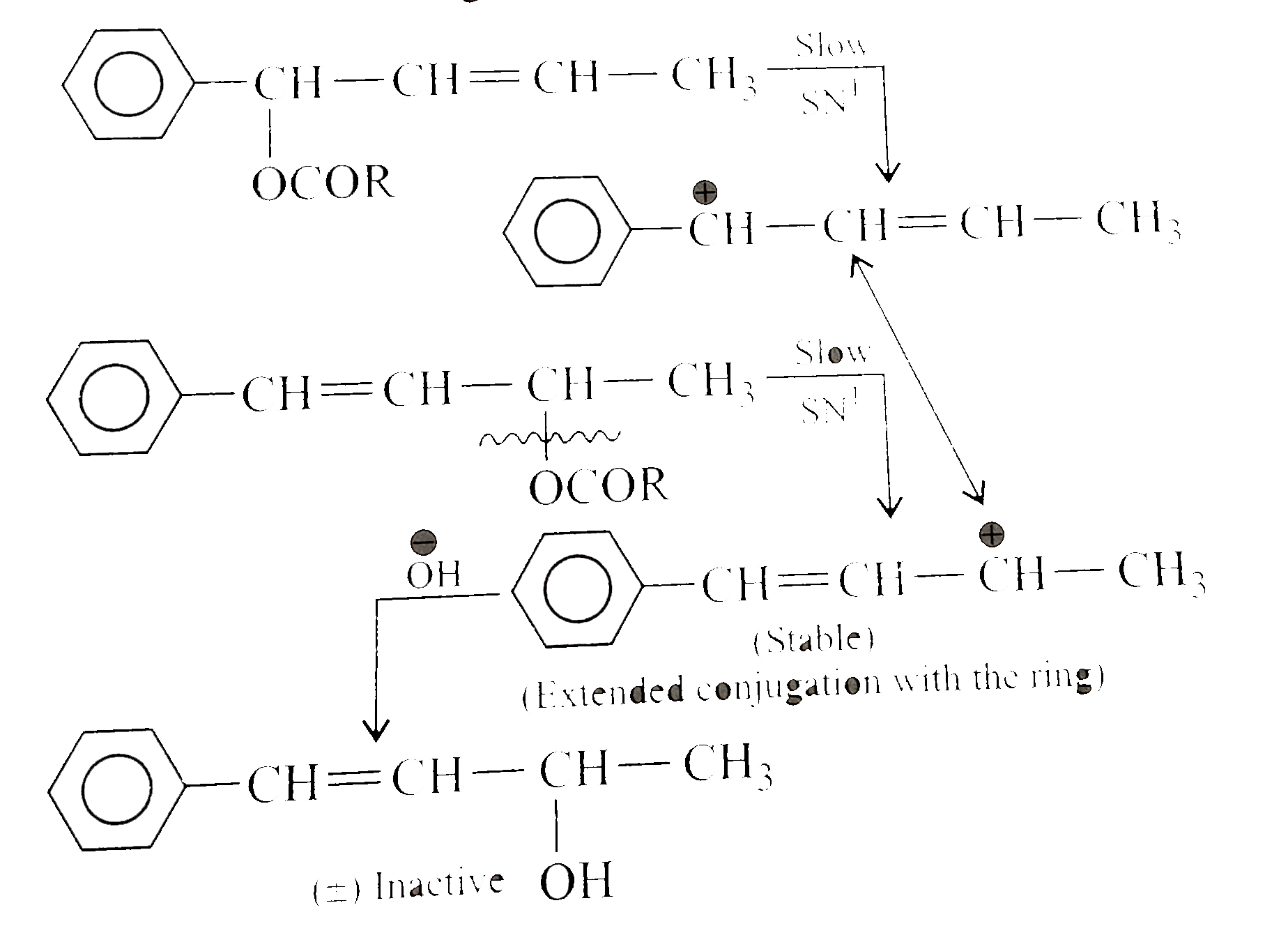 .
.
|
Topper's Solved these Questions
- ORGANIC REACTION MECHANISMBOOK - CENGAGE CHEMISTRY ENGLISHCHAPTER - ORGANIC REACTION MECHANISMEXERCISE - Comprehension
35 Videos
- ORGANIC REACTION MECHANISMBOOK - CENGAGE CHEMISTRY ENGLISHCHAPTER - ORGANIC REACTION MECHANISMEXERCISE - Multiple Correct
30 Videos
- ORGANIC REACTION MECHANISMBOOK - CENGAGE CHEMISTRY ENGLISHCHAPTER - ORGANIC REACTION MECHANISMEXERCISE - Solved Example
33 Videos
- NCERT BASED EXERCISEBOOK - CENGAGE CHEMISTRY ENGLISHCHAPTER - NCERT BASED EXERCISEEXERCISE - Chemical Equilibrium
73 Videos
- P-BLOCK GROUP 13 - BORON FAMILYBOOK - CENGAGE CHEMISTRY ENGLISHCHAPTER - P-BLOCK GROUP 13 - BORON FAMILYEXERCISE - Exercise Archives (Subjecive)
9 Videos
Similar Questions
Knowledge Check
Following table summarises the differences between light reactions and dark reactions.

Which of the above paris of difference is/are incorrect?Ai and ivBiii and ivCii onlyDi only
Explain the machanism of the following reaction :
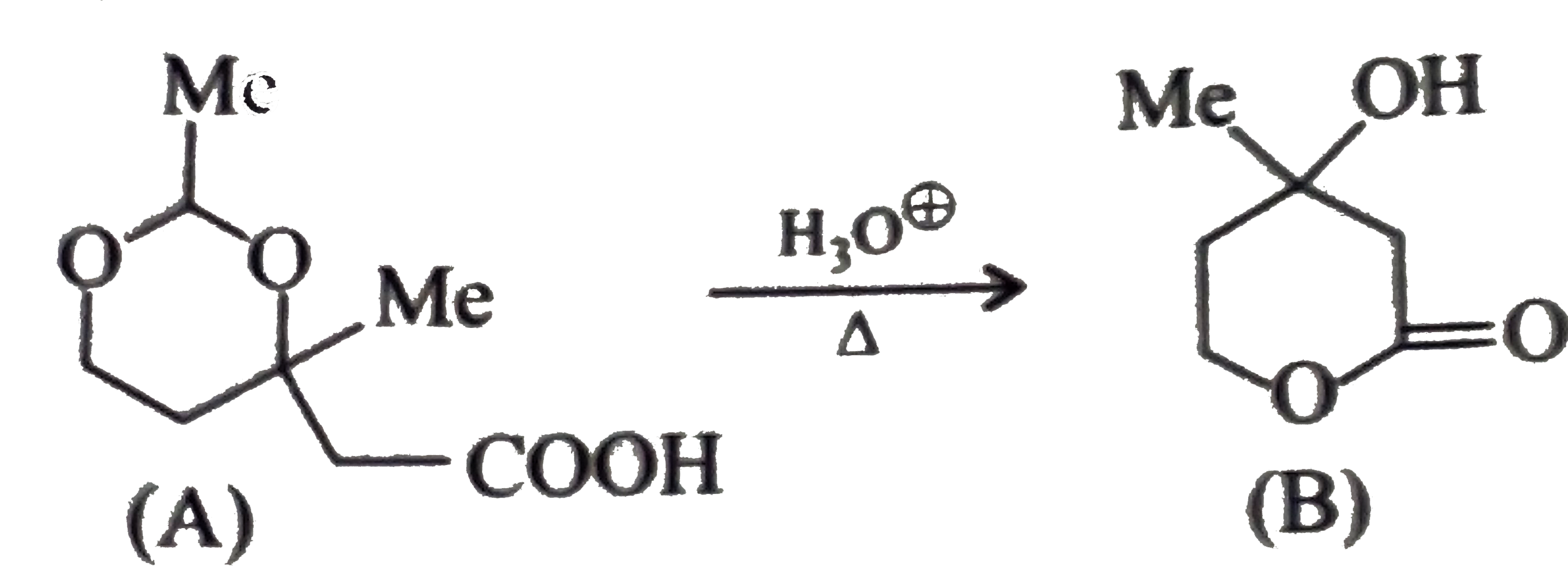 .
.
View SolutionExplain the difference in the nature of bonding in LiF and LiI .
View SolutionExplain the formation of the compound in the following reaction.
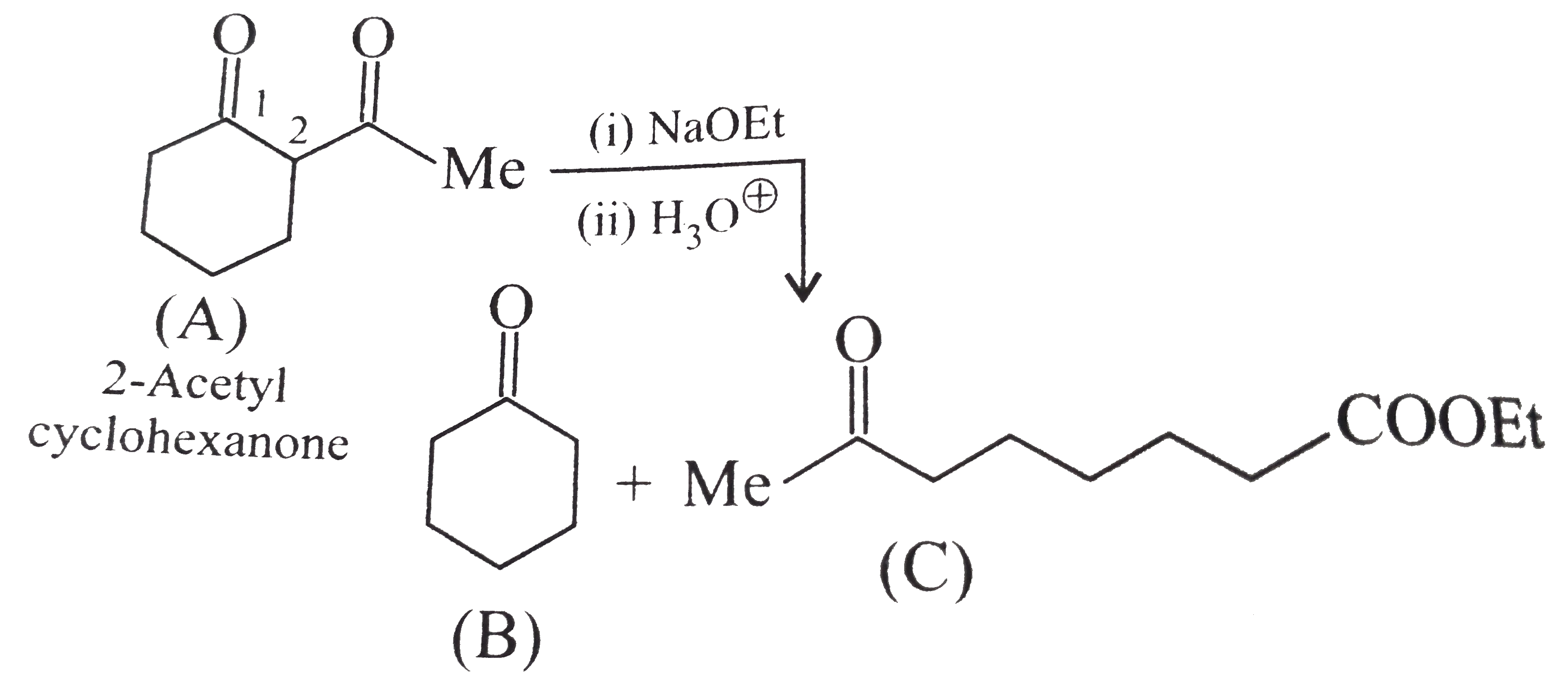 .
.
View SolutionGraphite and diamond will behave differently in which of the following reactions?
View SolutionExplain or complete the following reactions.
(i)
View SolutionGive one point of difference between the following on the basis of what is given in the brackets:
Light reaction and dark reaction (site of occurrence)
View SolutionExplain the difference in properties of diamond and graphite on the basis of their structures.
View Solution

